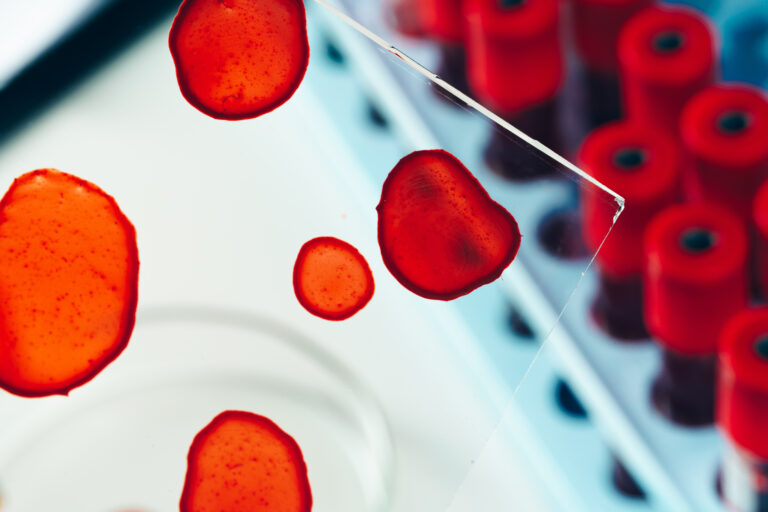Properties in vitro and in vivo (rabbit, guinea pig, mouse) of a new absorbable polymer and allogeneic bone composite for bone regeneration and orthopedic implants.
Currently, there is no bone fixation material that could fully replace competent host bone. The gradual replacement of bone graft by host bone is a result of its unique potential associated with the presence of bone morphogenetic proteins (BMPs). However, the size of human bone limits the use of alloplastic implants for surgical (orthopedic) fixation.
The aim of this project was to develop a new composite material for bone regeneration, consisting of powder derived from human bone obtained from a tissue bank and an absorbable polymer (13% by weight of bone powder in medical-grade polylactide). Such a biomaterial could possess osteoinductive properties and be used for manufacturing bone fixation implants of various shapes and sizes.

Samples:
Samples were obtained by tape casting and film pressing, then subjected to radiation sterilization with a dose of 35 kGy. Two cell lines – normal mouse embryo fibroblasts (Balb 3T3/c) and human fetal osteoblasts (hFOB 1.19) – were cultured with biomaterial extracts (MTT assay) or in indirect contact with the evaluated biomaterials (agar diffusion method). Additionally, cell viability was assessed after 5 days of incubation with the biomaterial using ThinCert tissue culture inserts. Subsequently, the following in vivo studies were conducted: acute systemic toxicity, skin irritation and sensitization, and local effects after implantation.

Research aim:
The aim of the study was to formulate an innovative biomaterial, a composite of human bone cortex allograft and biodegradable polymer. Biodegradable polymers provide appropriate mechanical properties and the ability to control degradation. The polymer binds to bone powder particles, allowing for mechanical processing and eliminating limitations regarding the final shape of the implant.
Test results:
The results of in vitro cytotoxicity tests conducted on Balb 3T3/c and hFOB 1.19 cells are presented in Figures 1, 2, and 3. All selected methods met the criteria for CN and CP response according to the guidelines. Results estimated using the MTT assay showed that cell viability after 24, 48, and 72 hours of incubation with extracts of the evaluated biomaterial ranged from approximately 88% to 108% compared to control groups C and CN.

Evaluation of the study:
The assessment of the composite material demonstrated a high degree of cytotoxicity and biocompatibility in accordance with international standards. Preclinical evaluation conducted on the new polylactide-based allogeneic biomaterial opens the possibility of patent application and advanced in vivo testing.
Similar Articles

Learn more about our ongoing projects and the range of services we offer.
Get in touch with us


 Read the article
Read the article
 Read the article
Read the article
 Read the article
Read the article